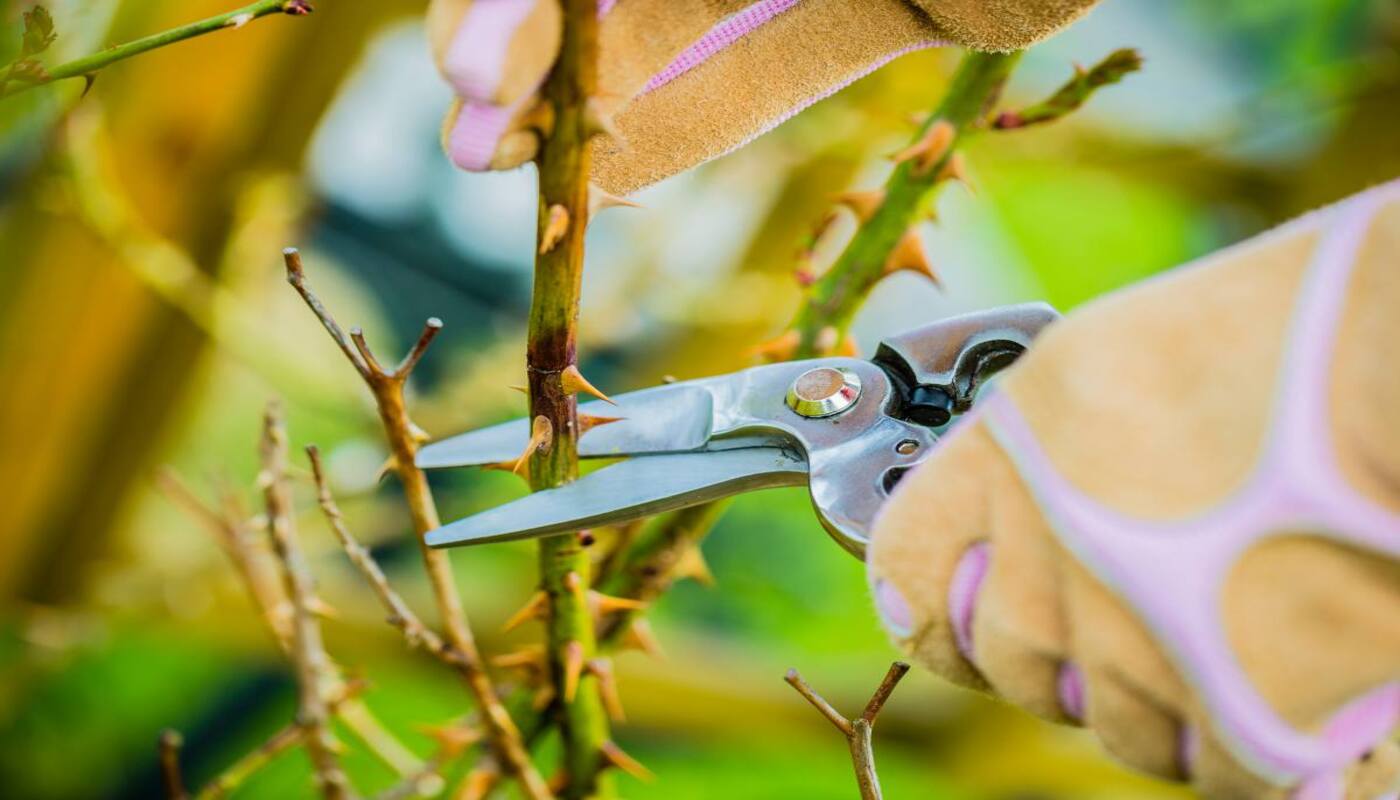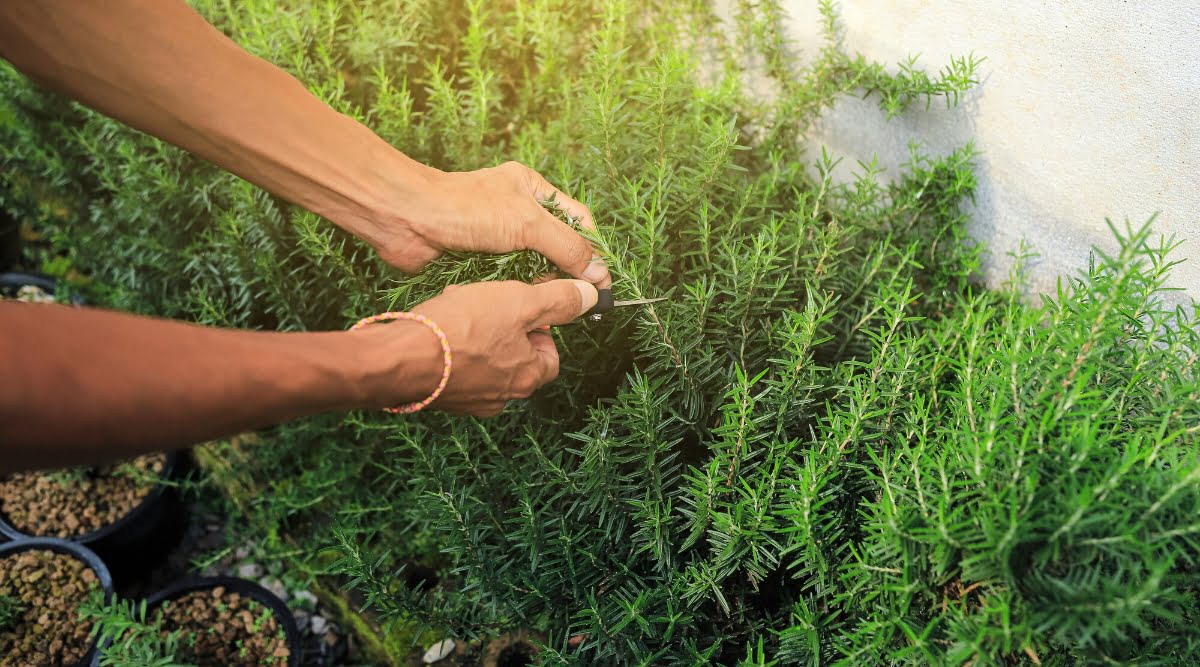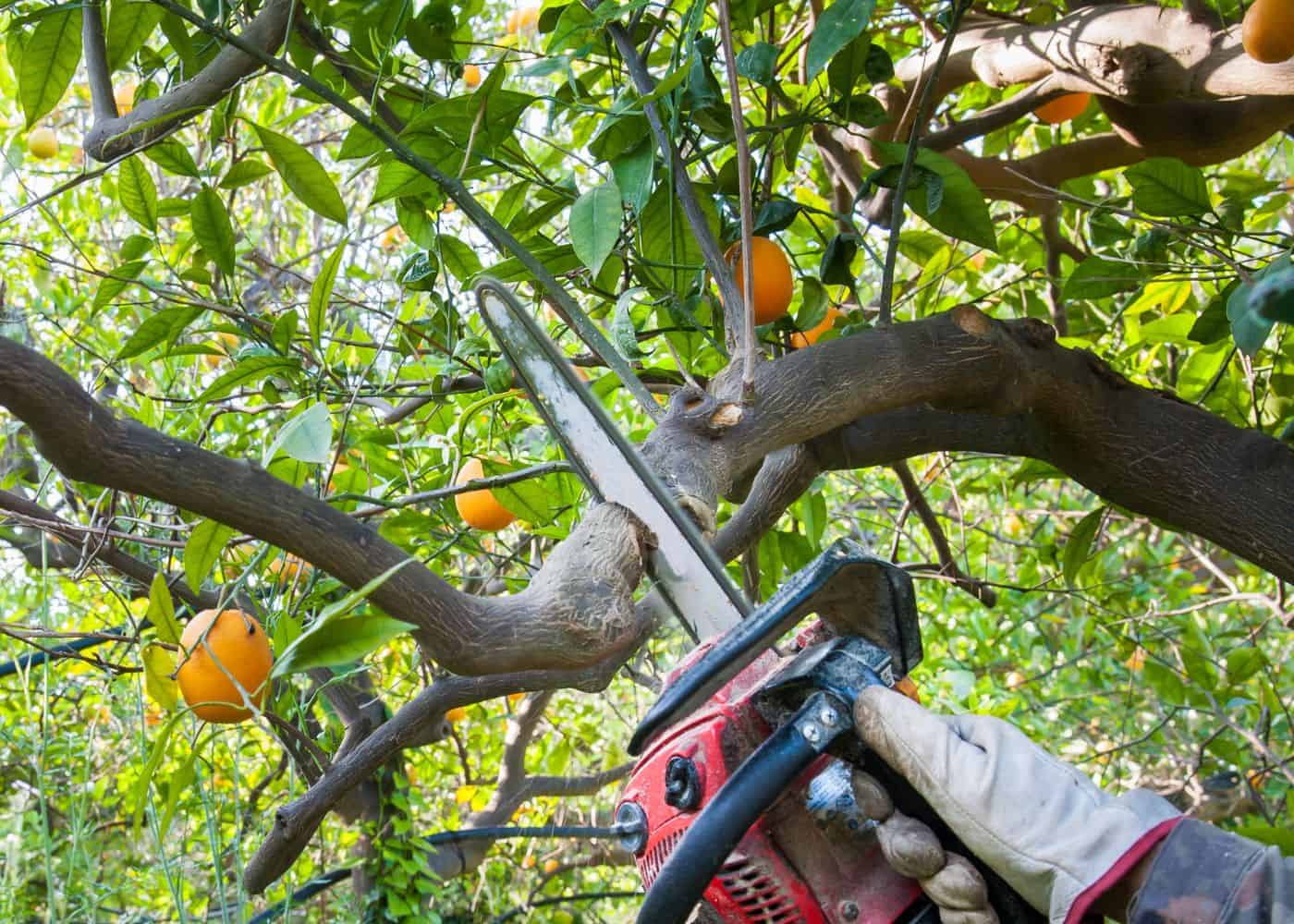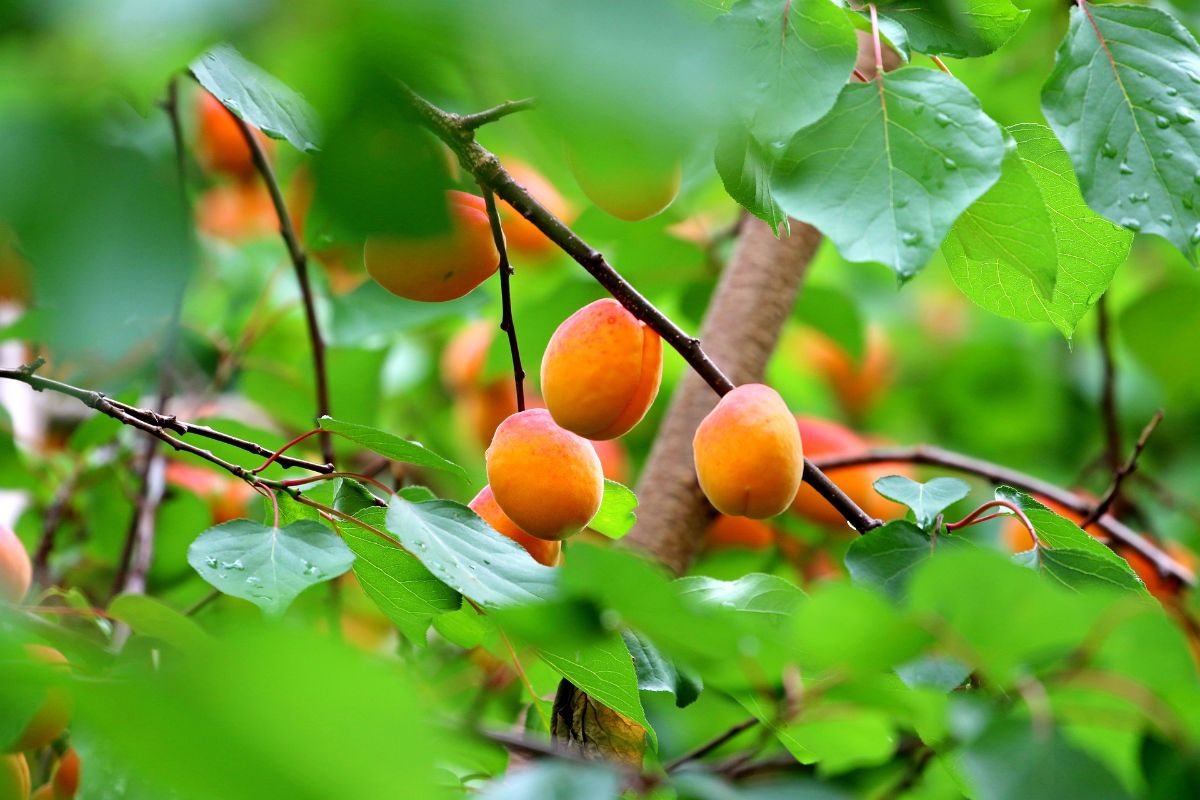Home>Gardening Techniques>Plant Care>Where To Cut When Pruning
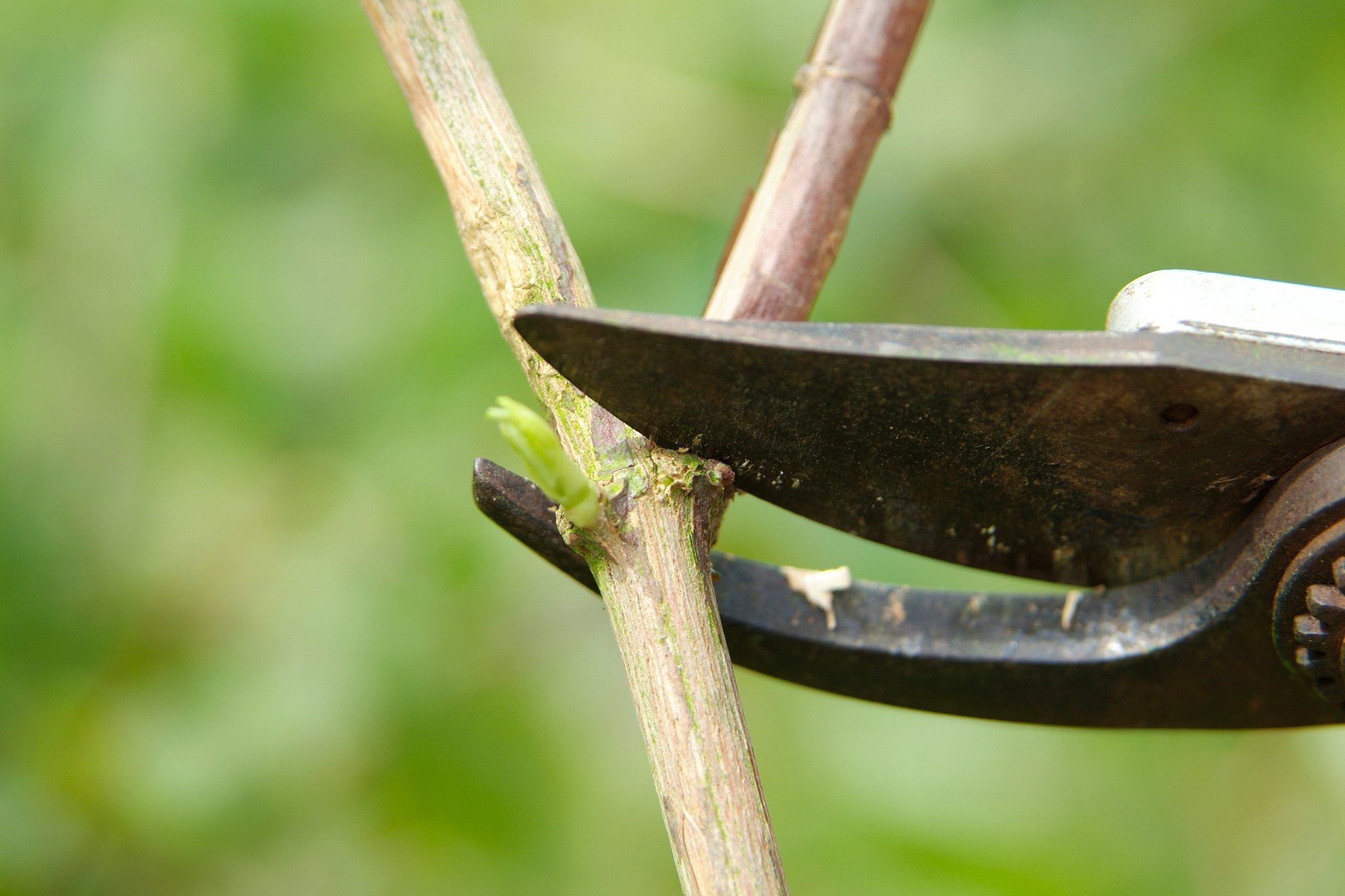

Plant Care
Where To Cut When Pruning
Modified: January 22, 2024
Learn the best practices for plant care and find out where to make the right cuts when pruning your plants for optimal growth and health.
(Many of the links in this article redirect to a specific reviewed product. Your purchase of these products through affiliate links helps to generate commission for Chicagolandgardening.com, at no extra cost. Learn more)
Table of Contents
Introduction
Pruning is an essential practice in plant care that involves selectively removing certain parts of a plant to promote proper growth, enhance aesthetics, and maintain overall plant health. It is a skill that every plant owner should possess, as it can significantly impact the vitality and appearance of their plants.
Whether you are a seasoned gardener or a beginner, understanding the fundamentals of pruning is crucial for successful plant care. Knowing when and where to cut can make all the difference in ensuring that your plants thrive and flourish.
In this article, we will explore the importance of pruning, different pruning techniques, when to prune, essential tools for pruning, where to make the cuts when pruning, common mistakes to avoid, and final tips for successful pruning. By the end of this article, you will have a comprehensive understanding of how to properly prune your plants to keep them healthy and beautiful.
So, let’s dive into the world of pruning and discover the secrets to achieving stunning plant growth and vitality through strategic cutting!
Why Pruning is Necessary
Pruning plays a vital role in the overall well-being of your plants. Here are several reasons why pruning is necessary:
- Promotes healthy growth: Regular pruning helps stimulate the growth of new branches and foliage by removing dead or diseased parts. By eliminating these damaged areas, you allow the plant to direct its energy towards new growth, resulting in a healthier and more vigorous plant.
- Enhances plant aesthetics: Pruning can shape and train plants to create a desired form or structure, promoting a more appealing and aesthetically pleasing appearance. Trimming and shaping plants can also improve their symmetry and balance, transforming your garden into a visually stunning space.
- Controls plant size: Some plants have a tendency to grow too large for their designated area. Pruning can help control the size of these plants, preventing them from overshadowing other nearby plants or encroaching on walkways and structures. With proper pruning, you can maintain the desired size and shape of your plants, ensuring they fit seamlessly into your landscape.
- Improves air circulation and sunlight exposure: Dense foliage can restrict air circulation and limit sunlight penetration, which can lead to the development of fungal diseases or hinder the overall growth of the plant. By selectively removing branches or thinning out the canopy, pruning allows for better air circulation and more even exposure to sunlight, reducing the risk of diseases and promoting optimal plant growth.
- Optimizes fruit production: Pruning fruit-bearing plants is essential for maximizing their productivity. Proper pruning techniques can improve fruit quality, increase yield, and facilitate the growth of strong and robust branches capable of supporting the weight of the fruit. Pruning also helps to prevent overcrowding and allows for better light penetration, ultimately resulting in a bountiful harvest.
By understanding the importance of pruning, you can take proactive steps to ensure the vitality, health, and beauty of your plants. Whether you have ornamental plants, fruit trees, or vegetable gardens, regular pruning is an essential part of plant care and maintenance.
Understanding Different Pruning Techniques
When it comes to pruning, different techniques are employed depending on the specific needs of the plant and the desired outcome. Here are some common pruning techniques:
- Thinning: This technique involves selectively removing specific branches to reduce the density of foliage. Thinning helps improve air circulation, sunlight penetration, and overall plant health. It is commonly used for trees and shrubs with dense foliage.
- Heading back: Heading back refers to cutting back the tips of branches to promote bushier growth. This technique is often used to control plant size, encourage branching, and rejuvenate older plants. It is commonly applied to shrubs and hedges.
- Pinching: Pinching involves removing the tips of young plant shoots by hand, usually with the thumb and forefinger. This technique encourages lateral growth and increases branching, resulting in fuller and more compact plants. Pinching is commonly used for herbaceous plants and bedding annuals.
- Deadheading: Deadheading involves removing spent flowers to promote continued blooming and prevent seed production. By removing dead blooms, plants channel their energy into producing new flowers. Deadheading is often done on flowering plants such as roses, petunias, and marigolds.
- Espalier: Espalier is a pruning technique where a plant is trained to grow flat against a wall, trellis, or support structure. By carefully shaping and pruning the branches, an espaliered plant develops a beautiful and uniform design. Espalier is commonly used for fruit trees and ornamental plants.
It’s important to understand the specific pruning needs of each type of plant and employ the appropriate technique accordingly. By using the right technique, you can achieve the desired shape, size, and health for your plants.
Remember, pruning techniques should be applied with precision and care. Improper pruning can lead to plant stress, weak growth, and even plant decline. If you’re unsure about the best pruning technique, it’s always recommended to consult a professional or refer to reliable gardening resources for guidance.
Identifying When to Prune
Knowing the right time to prune your plants is essential for achieving optimal results. The timing of pruning can vary depending on the type of plant and its growth habits. Here are some general guidelines to help you identify when to prune:
- Winter Dormancy: Many deciduous trees and shrubs are best pruned during their dormant period, which is typically in late winter or early spring before the new growth emerges. Pruning during this time allows the plant to direct its energy towards new growth and minimizes the risk of disease transmission.
- Spring Bloomers: Plants that produce flowers in early spring bloom on old wood. It is best to prune these plants immediately after they finish flowering. Pruning them later in the growing season may remove flower buds and result in a loss of blooming for the following year.
- Summer Bloomers: Plants that bloom in the summer typically flower on new growth. Prune these plants in late winter or early spring before new growth begins. This allows the plant to produce vigorous new growth that will bear flowers during the summer months.
- Evergreens: Evergreen plants can be pruned throughout the year, but it is best to avoid pruning during periods of active growth. Prune them during late winter or early spring to minimize stress and encourage new growth before the onset of summer.
- Pruning for Shape and Size: If you are pruning for shape or size control rather than to promote flower production, it is important to consider the plant’s growth habits. Prune plants that flower on new growth in late winter or early spring, while those that flower on old wood should be pruned immediately after flowering.
It’s worth noting that not all plants require pruning. Some plants, such as cacti and succulents, have minimal pruning needs, while others may require regular pruning throughout the year to maintain their shape and form.
Before you start pruning, be sure to research the specific pruning requirements of your plants. Familiarize yourself with their growth habits and flowering patterns to determine the appropriate timing for pruning. By pruning at the right time, you can maximize the benefits and ensure the health and beauty of your plants.
Essential Tools for Pruning
To effectively prune your plants, you’ll need a few essential tools that will make the task easier and more precise. Here are some must-have tools for pruning:
- Pruning Shears: Pruning shears, also known as hand pruners or secateurs, are one of the most commonly used tools for pruning. They are perfect for cutting small branches, stems, and twigs up to about ¾ inch in diameter. Look for a pair with a comfortable grip and a bypass cutting action for cleaner cuts.
- Pruning Saw: A pruning saw is essential for cutting thicker branches that are too large for pruning shears. It has a curved or straight blade with aggressive teeth designed to make clean and efficient cuts through branches up to several inches thick. Choose a pruning saw with a comfortable handle and a blade length suitable for the size of branches you’ll be pruning.
- Loppers: Loppers are similar to pruning shears but have long handles for added leverage and cutting power. They are ideal for cutting through thicker branches, typically up to about 2 inches in diameter. Look for loppers with sharp blades, durable handles, and a comfortable grip.
- Hedge Shears or Trimmers: If you have hedges or shrubs that require frequent trimming, hedge shears or trimmers are necessary. They have long, straight blades that can easily trim and shape hedges and shrubs. Look for lightweight and durable hedge shears with sharp blades for clean and precise cuts.
- Pruning Gloves: It’s important to protect your hands while pruning, especially when dealing with thorny plants. Invest in a pair of sturdy pruning gloves made of thick, puncture-resistant material. They will offer protection from thorns, sharp branches, and other potential hazards.
- Disinfectant: To prevent the spread of diseases or pests, it’s crucial to disinfect your pruning tools between plants, particularly if you’re pruning multiple plants or have encountered diseased branches. Using a household disinfectant or a solution of bleach and water, wipe down the blades of your tools before moving on to the next plant.
Before you start pruning, ensure that your tools are clean, sharp, and in good working condition. Dull or dirty tools can damage plants and make pruning more difficult. Regularly clean and maintain your pruning tools to ensure they stay sharp and ready for use.
By having these essential pruning tools in your arsenal, you’ll be well-equipped to tackle any pruning task and care for your plants with precision and ease.
Where to Cut When Pruning
Knowing where to make the cuts when pruning is essential for the health and appearance of your plants. Here are some general guidelines on where to cut when pruning:
- Branch Collar: When removing a branch, always make the cut just outside the branch collar. The branch collar is the area where the branch attaches to the main trunk or another branch. It appears as a slightly swollen or raised bump. Cutting just outside the branch collar helps the plant heal properly and reduces the risk of introducing diseases or pests into the main trunk.
- Angled Cut: When making cuts on larger branches, use an angled cut. This type of cut allows water to drain off the surface and prevents water accumulation that could lead to disease or rot. Make the cut about a quarter-inch above a bud or side branch to encourage new growth and prevent dieback.
- Thin Out Crowded Areas: When thinning out plants with dense foliage, make selective cuts to remove whole branches or stems. The goal is to create better airflow and light penetration within the plant, reducing the risk of fungal diseases. Remove branches that are crossing or rubbing against each other, as well as any weak or damaged branches.
- Remove Suckers and Water Sprouts: Suckers are vigorous shoots that grow from the base of the plant, while water sprouts are fast-growing vertical shoots that emerge from the trunk or branches. Both suckers and water sprouts can divert energy away from the plant and should be pruned close to the point of origin, typically at the base of the plant or the branch.
- Heading Back: When using the heading back technique to promote bushier growth, make the cut just above a bud or leaf node. This stimulates the growth of lateral branches and encourages a fuller appearance. Avoid cutting too close to the bud, as this can damage the growing point.
Remember to use clean, sharp pruning tools to ensure clean cuts and minimize damage to the plant. Avoid leaving stubs or making cuts too close to the main trunk, as this can hinder proper healing and increase the risk of disease. Proper pruning cuts promote healthy regrowth and maintain the natural shape and structure of the plant.
Keep in mind that plant species may have specific requirements for pruning cuts. It’s always beneficial to research the specific needs of your plants or consult with a professional to ensure you are making the correct cuts for optimal plant health and development.
Common Mistakes to Avoid
While pruning is a necessary and beneficial practice, there are several common mistakes that gardeners should avoid to ensure the health and longevity of their plants. Here are some key mistakes to watch out for:
- Overpruning: One of the most common mistakes is overpruning, which involves removing too much foliage or branches from a plant. Overpruning can weaken the plant, stunt its growth, and make it more susceptible to diseases and pests. It’s important to understand the specific pruning requirements of each plant and avoid excessive pruning.
- Pruning at the Wrong Time: Pruning at the wrong time can negatively impact the plant’s growth and flowering. It’s essential to identify the appropriate time to prune for each plant species. Pruning at the wrong time, such as during the active growing season or when the plant is about to bloom, can interfere with its natural development and result in reduced flowering or delayed growth.
- Incorrect Angle of Cuts: Making improper cuts, such as cutting too close or too far from the branch collar, can hinder the plant’s healing process and increase the risk of diseases. It’s important to make clean cuts just outside the branch collar and use an angled cut for larger branches to ensure proper healing and prevent water pooling.
- Using Dull or Dirty Tools: Pruning with dull or dirty tools can lead to jagged cuts and introduce diseases to the plants. It’s crucial to regularly clean and sharpen your pruning tools to ensure clean, precise cuts. Additionally, disinfect your tools between plants to prevent the spread of diseases.
- Ignoring Plant-specific Pruning Needs: Different plants have different pruning requirements, and it’s essential to understand the specific needs of each plant species. Some plants may require minimal pruning, while others may need regular shaping and maintenance. Ignoring plant-specific pruning needs can lead to improper growth patterns, reduced flowering, and overall poor plant health.
To avoid these common pruning mistakes, take the time to research and understand the needs of your plants. Consult gardening resources, seek advice from professionals, and observe the natural growth patterns of your plants. By following proper pruning techniques and avoiding these mistakes, you can ensure the health, vitality, and beauty of your garden.
Final Tips for Successful Pruning
Pruning can be a rewarding and beneficial practice when done correctly. Here are some final tips to ensure successful pruning:
- Know Your Plants: Familiarize yourself with the specific needs and growth habits of your plants. Different plants have different pruning requirements, so understanding their unique characteristics will help you make informed pruning decisions.
- Start Small: If you’re new to pruning, start with smaller plants or less complex pruning tasks. This will allow you to gain confidence and experience before tackling more demanding pruning projects.
- Inspect Before You Prune: Before making any cuts, take the time to carefully inspect your plants. Look for dead, damaged, or diseased branches that need to be removed. Also, consider the overall shape and structure of the plant to determine if any selective pruning is necessary for aesthetics or airflow.
- Monitor Growth and Adjust: Regularly monitor the growth of your plants after pruning. If you notice any issues or imbalances, make necessary adjustments by selectively pruning or training the plant to achieve a more desirable shape or size.
- Protect Wounds: When making larger cuts, it’s advisable to apply a pruning seal or wound dressing to protect the exposed area. This can help prevent the entry of pests or diseases and aid in the healing process. However, note that some experts argue that pruning sealants may hinder healing, so it’s best to research and decide based on the specific plant and situation.
- Practice Patience: Pruning is a process that requires patience. As you prune your plants, remember that it may take some time for them to respond and show new growth. Avoid the temptation to rush or over-prune in an attempt to achieve instant results.
- Continue Learning: The world of pruning is vast, and there is always more to learn. Stay curious and continue learning about different plants, pruning techniques, and best practices. Attend workshops, read books, or join gardening communities to expand your knowledge and refine your skills.
Remember, successful pruning is about finding the balance between removing necessary growth and preserving the health and vitality of your plants. With practice, attention to detail, and a genuine love for your plants, you’ll become a skilled pruner and enjoy the rewards of a thriving and beautifully maintained garden.
Conclusion
Pruning is a fundamental aspect of plant care that is crucial for promoting healthy growth, enhancing aesthetics, and maintaining overall plant health. By understanding different pruning techniques, identifying the right time to prune, using the essential pruning tools, knowing where to make the cuts, and avoiding common mistakes, you can successfully prune your plants to keep them thriving and beautiful.
Remember that pruning is not a one-size-fits-all approach. Each plant has its own unique pruning requirements, so take the time to research and understand the specific needs of your plants. By doing so, you can tailor your pruning practices to suit the individual characteristics of your plants and ensure their optimal growth and development.
Pruning is both an art and a science. It requires patience, observation, and attention to detail. As you develop your pruning skills, you will gain a deeper understanding of your plants and their responses to pruning. With practice and experience, you will become more confident in your abilities to shape, care for, and rejuvenate your plants.
Lastly, remember to approach pruning with a sense of enjoyment and creativity. Use your knowledge and skills to create beautifully pruned plants that enhance the aesthetics of your garden. Embrace the therapeutic nature of pruning as you connect with your plants and witness the positive impact your efforts have on their growth and vitality.
So, go ahead and grab your pruning tools, apply your newfound knowledge, and embark on a pruning journey that will not only benefit your plants but also bring you joy and satisfaction as a gardener.

